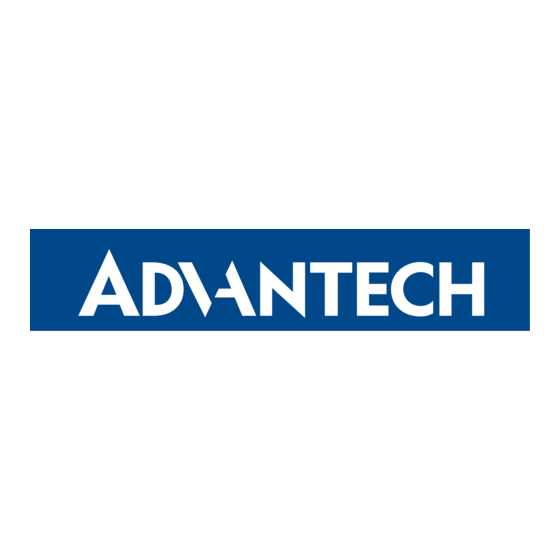Table of Contents
Advertisement
Quick Links
Advertisement
Table of Contents

Summary of Contents for Advantech PCL-734
- Page 1 PCL 734 32 channel Isolated Digital Output Card...
- Page 2 A c k n o w l e d g m e n t s PC-LabCard is a trademark of Advantech Co., Ltd. IBM and PC are trademarks of International Business Machines Corporation. MS- DOS, Microsoft C and Quick BASIC are trademarks of Microsoft Corporation.
-
Page 3: Table Of Contents
C o n t e n t s Chapter 1 General information ..........1 Introduction ................2 Features .................. 2 Applications ................2 Specifications ................. 3 Digital output .................3 Register format ................3 Dimensions ..................3 Connectors ..................3 Power consumption ................3 Daughterboards ..............3 Chapter 2 Installation ............... -
Page 5: Chapter 1 General Information
General information Chapter 1 General information... -
Page 6: Introduction
I n t r o d u c t i o n The PCL-734 offers 32 isolated digital output channels on a PC add- on card. Its isolated output channels provide 1,000 V of protection. Each I/O channel corresponds to a bit in a PC I/O port. This makes the PCL-734 very easy to program. -
Page 7: Specifications
S p e c i f i c a t i o n s Digital output 32 optically isolated outputs • Output voltage: Open collector 5 to 40 V • Sink current: 200 mA max. • Isolation voltage: 1,000 V Register format BASE+0... - Page 8 PCL 734 User's Manual...
-
Page 9: Chapter 2 Installation
I n s t a l l a t i o n Chapter 2 Installation... -
Page 10: Initial Inspection
It should be free of marks and in perfect order on receipt. As you unpack the PCL-734, check it for signs of shipping damage (damaged box, scratches, dents, etc.). If it is damaged or fails to meet specifications, notify our service department or your local sales representative immediately. - Page 11 Card connector, jumper and switch locations Label Function Isolated output E.GND (external ground) Card base address Chapter 2 Installation...
- Page 12 We set the PCL-734 for a base address of Hex 300 at the factory. If you need to adjust it to some other address range, set switch SW1 as shown in the following table: Card I/O addresses (SW1) Range (hex) Switch position ¡...
-
Page 13: Hardware Installation
Save the screw to secure the interface card retaining bracket. 6. Carefully grasp the upper edge of the PCL-734 card. Align the hole in the retaining bracket with the hole on top of the expansion slot and align the gold striped edge connector with the expansion slot socket. - Page 14 PCL 734 User's Manual...
-
Page 15: Chapter 3 Signal Connections
Signal connections Chapter 3 Signal connections... -
Page 16: Connector Pin Assignments
Connector assignments The PCL-734 has a DB-37 connector accessible from the card bracket. See the figure on page 9 for the location of each connector. Pin assignments for each connector appear in the following sections. A b b r e v i a t i o n s... -
Page 17: Isolated Output
Isolated Output Each of the eight isolated digital output channels come equipped with eight darlington transistors featuring common emitters and integral suppression diodes for inductive loads. If the external voltage (5 to 40 V) is connected to each isolated output channel (IDO) and its isolated digital output turns on (max. - Page 18 PCL 734 User's Manual...
-
Page 19: Chapter 4 Register Format
Register format Chapter 4 Register format... - Page 20 Programming the PCL-734 is extremely simple. Each output channel corresponds to a bit in the card's registers. To turn on an output channel you write a ‘‘1” to the corresponding bit. The card requires four I/O register addresses. The address of each register is specified as an offset from the card's base address.
-
Page 21: Appendix Apc I/O Port Address Map
PC I/O port address Appendix A PC I/O port address map... - Page 22 PC I/O port address map Range (hex) Function Base system 2 0 0 Reserved 2 0 1 Game control Reserved LPT2: (2nd printer port) Reserved COM2: Reserved LPT1: (1st printer port) Reserved Mono Display/Print adapter Reserved Color/Graphics Reserved Floppy disk drive COM1: Москва: Телефон: (095) 234 0636 (4 линии)












Need help?
Do you have a question about the PCL-734 and is the answer not in the manual?
Questions and answers